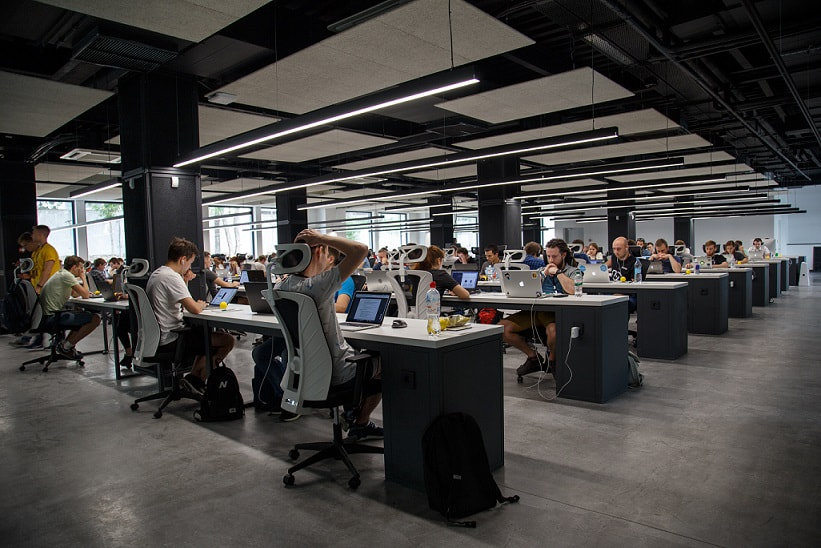|
By Jacqui Mulholland You may have heard of the term “holistic” sometimes spelled “wholistic” when referring to certain health modalities and practices. Here we will explore what holistic means and how it applies in a remedial massage context, and why I choose to approach my treatments in this way. What Does Holistic Mean?
Holistic means that the patient is treated as a whole person, taking into account physical, mental, emotional, societal & even spiritual aspects. Seeing all these aspects of a person all playing a function in disease, symptoms and the quality of the human experience. Believing that all of these parts are interconnected and interdependent and make up the whole of you. How Does it Apply to Remedial Massage? Viewing a person holistically in a massage treatment provides a wider lens from which to view and address the pain or symptoms. Whilst working to provide practical relief and improved function within the physical body, the therapist is aware of the potential to impact multiple layers of a person's well-being and health. The practitioner works within the scope of a remedial therapist in line with their training and experience with an understanding and appreciation of the complex human experience and the correlation of all of the aspects that relate to mind-body health. This does not mean that we have the ability to diagnose or recognise illness, or mental health conditions nor the ability to treat specifically to those issues. However we are aware of the impact that our regular treatments can have on these aspects of your health, and how our treatments can provide continued support to you and complement other treatments you may need. Often the holistic massage therapist will have an interest and possibly some training in supporting natural healing modalities that give them further understanding and experience of a broader range of possible impacts to your whole health. Eastern medicine and ancient philosophies and practices can provide some further support and insight into your health. Whilst your therapist may be aware and trained in these alternative modalities, they often require a separate treatment or referral to another practitioner. While the focus is on providing a remedial massage treatment with your massage therapist, we may also be able to recommend another form of therapy or practice that we believe may be beneficial for you. These may include modalities such as meditation, yoga, pilates, nutrition, naturopathy, chinese medicine, acupuncture, reiki, psychotherapy, holistic counselling and so many more! Often a combination of therapies can help give you a greater understanding of what works for you and how you would like to support your holistic health and wellbeing. These options are particularly helpful if you are curious about approaching your health from a more holistic perspective. If you are interested or believe the holistic approach to your health might benefit you, You could start by asking yourself some of these questions: How is my physical health? How is my mental/emotional health? How is my spiritual health? How is my gut health? How is the quality of my sleep? Am I present? Or am I mostly focused on thoughts of the future or the past? How are my intimate relationships? How is my libido? How are my energy levels? Am I moving my body enough? Do I make time to rest? Am I too harsh or critical of myself? Do I tend to put others' needs before my own? Am I struggling to keep up with the endless and ever-growing to-do-list? Do I feel constantly drained, depleted, lacking energy and vitality? Am I feeling disconnected and detached from people, work or relationships? Do I feel burnt out? Have I lost faith in the decency, kindness or humanity of others? I could go on and on! As you can see, there are varied and complex feelings and influences on our whole-being health. This human experience can be challenging and confusing at times. Knowing that you have more choices than you think to support yourself is empowering! Which is why opening up your awareness and exploring some holistic modalities can support you in a variety of ways. Start with something you might feel more comfortable with and go from there. If massage is your thing, I would love to be able to meet you and support you on your holistic health journey. Sometimes initially it can help to ask questions and get some recommendations so you can feel more confident about which path to choose. Book a holistic remedial massage with me and let's discover what works for you to achieve your holistic health goals. If you work at a desk for hours on end, you know that it can be uncomfortable at the best of times. Office workers have just as much risk of injury and chronic pain as other more physically strenuous occupations. You may be at risk of issues including back pain, neck pain, repetitive strain injury or RSI and carpal tunnel syndrome.
So how can you minimise your chance of hurting yourself and stay at the top of your game? Our myotherapist Emily shares some of her tips for staying healthy and preventing pain and injury for office workers. Stretch often When you’re focused on your work, you often forget to shift position. Unfortunately, our bodies weren’t designed to stay in a position for hours at a time. That’s why the simplest tip is to stretch whenever you feel stiff, sore or fatigued. Stretching can also help to boost blood flow to the brain, which means you are more focused and productive. You can simply stretch at your desk if needed – stretch out your neck, shoulders and back, and do some circles with your ankles. But you can also do a standing stretch, which brings us to our next tip. Set yourself reminders to move Small amounts of movement throughout the day add up when it comes to preventing office injuries. But when you’re in the zone, you might forget! That’s why it’s useful to set yourself a reminder or alarm on your phone or computer. Aim for at least 1-2 minutes per hour of movement. This might be standing and stretching, going and getting a glass of water, making yourself a coffee or tea, going to the toilet or just walking around the office to get your muscles and joints moving. Give a sit/stand desk a try Desks that can alternate between a seated and standing position have become popular recently. They allow you the best of both worlds – you can sit for a bit, then switch to standing as a break from sitting. Have a chat to your employer about whether you can trial a sit-stand desk. The good thing is that many people find sit-stand desks boost productivity, so employers are often open to them. If you work for yourself or you are the boss, you can hire sit-stand desks and other equipment before purchasing. Make the most of lunchtime It can be tempting to eat lunch at your desk and power through the to-dos. But your lunch and break times are an opportunity to move around and give your muscles and joints a break as well. Get up and get moving. Head to a local park to have your lunch if it’s sunny outside. Grab a coffee from the café around the corner. You can even go for a brisk 5-minute walk around the block at the end of your break to wake up your brain and your body. That way, you’ll go back to work feeling refreshed. Get moving before or after work Some days you won’t get much time to move at work, so make the most of the hours outside of work. Find a way to get your body moving on a regular basis. This doesn’t mean you need to slog away at the gym for an hour every day. You can do some yoga stretches at home, walk the dog or go to the playground with your kids. If you do find yourself too tired to move after work, try getting up 15 minutes earlier and go for a walk around the block before work. It seems counter-intuitive, but exercise actually boosts your energy and relieves fatigue. Even a little bit each day will add up! Get a regular remedial massage or myotherapy treatment Your muscles and joints need care, just like every other part of you. That’s why regular treatments can help to prevent injury and pain. Our desk worker clients find that a treatment every 2-6 weeks helps to relieve tension and pain. Many report that they have fewer headaches, lower stress levels, improved sleep and mood and greater movement in joints and muscles. So if any of those are on your wish list, regular massage and myotherapy might be the answer! Is regular massage or myotherapy on your to-do list? Our myotherapist Emily is currently open for new clients. You can book with a session with her here. A lot of people who don't have persistent pain don’t realise how much chronic pain sucks. Ongoing pain isn’t just about physical discomfort – it also affects your mental wellbeing, your social life and your long-term health. This is why I have such a strong focus on chronic pain management as a myotherapist.
But what can myotherapy do to help with chronic pain? I’m glad you asked! One of the things I love about myo is that it has so many tools, so there is always one that can suit your needs and tolerance. Here are the main ways I use myotherapy techniques to help you manage chronic pain. It helps to manage acute flare-ups When you have chronic pain, it’s common to have a flare-up of symptoms and/or pain levels. Sometimes it can be your nervous system increasing your sensitivity, and sometimes it’s a physical factor such as tight muscles that cause issues. Either way, different techniques such as taping, massage and mobilisation can relieve the flare. It can down-regulate the pain response One of the main problems with chronic pain is that the body becomes more sensitive to pain messages sent by the nervous system. Sometimes the number of connections along nerves can be altered. Other times, there is a greater release of neurotransmitters, which makes the body super-sensitive to sensation. I cover this a bit more in my pain matrix article, but non-painful sensations can block the danger messages. This means that pressure from a gentle massage or myofascial release stretching can help to reduce pain. It can look at the root causes behind chronic pain There are so many factors that can lead to chronic pain, and even more that can aggravate it. But as a myotherapist that focuses on chronic pain, it’s my job to be an investigator into your pain. Your treatment plan might include exercises and stretches that aim to correct any underlying causes of pain. We’ll also have regular discussions about the lifestyle factors that might be contributing, and ways to modify them. And if I think one of your triggers is out of my zone, I’ll refer you to a trusted practitioner who also works with chronic pain. It can reduce stress hormones Want to hear something cool? The relaxation after a myotherapy session isn’t all in your head. Research has found that massage can reduce cortisol, your main stress hormone, by 31%. As a bonus, it can also boost your levels of feel-good brain chemicals serotonin and dopamine. If that isn’t a good reason for regular myotherapy sessions, I don’t know what is! It can release trigger points Ever had a little knot feeling on a muscle, that when pressed, feels so sore but so good? That’s a trigger point. These taut bands are like a micro-spasm of a muscle (not a full muscle spasm like if your leg cramps in the night!) Trigger points can contribute to chronic pain, and they can certainly exacerbate it. Because trigger points tend to have referral patterns, they can also make you feel pain outside of the area that the actual trigger point is found. As part of your myotherapy treatment, I can release any problematic trigger points around the area of pain. For example, if you have chronic headaches, I might look at the trigger points around your head, jaw and shoulders. Tape can be used to stabilise joints if needed If your chronic pain comes with any joint instability, taping is a great tool for managing it after you leave the session. By using either rigid or kinesiotape, depending on the issue, we can stabilise the problem joint or joints. That way, your painful area is supported and you’re less likely to make movements that aggravate the pain. The tape can also be used to help continuously guide and remind your joints of a better position to rest in which helps to take strain off certain areas. Looking to manage your own chronic pain? Your no-pain, all-gain myotherapist is here to help. Head here to book your appointment today The human body is an incredibly complex machine! There are connections that go from one end of the body to the other, and even some that we don’t completely understand yet. But when it comes to your own body, it’s easy to think that it’s simple. Pain happens, and we assume that the pain is from there.
But in reality, pain and dysfunction is far more complicated than that. So today, I thought I’d explore the holistic approach to caring for your body, and why it’s important to understand that your body parts aren’t separate. Pain isn’t always accurate When we’re in pain, we know that something is wrong. But unfortunately, the body isn’t always able to tell us exactly what that something wrong is! This is why pain can be a very confusing condition. For example, you might think that your back pain originates from your back. You go and see a remedial massage therapist who focuses on relieving tension in the back area. But the pain returns. The thing is, your back might not be the actually problem. The pain might be caused by a previous injury causing your pelvis to misalign, which then strains the muscles in the back. Or it might be the shoes that you wear to work, altering your posture. Only by taking a holistic view are we able to find and manage this kind of issue. The benefits of a holistic approach There are so many reasons why it’s smarter to look at the bigger picture of your health and wellbeing. That’s why I recommend that my clients work with a team for optimal results. Benefits of this holistic approach include:
As you can see, you benefit a lot more from caring for your entire body, rather than just treating a specific pain spot! What to tell your myotherapist To take a holistic view of your body and how it functions, I need to be able to take a detailed case history. It’s essential that you tell your myotherapist about any significant injuries, no matter how unrelated you might think it is. Some of my clients have found out that minor injuries have played a major role in their pain! Things to inform me about include:
Do you want to see what a holistic approach can do for your body? Pop over to the booking page and get yourself an appointment today. |
Meet Our Team
We have a team of great practitioners available 7 days a week at our Rowville clinic. Archives
July 2024
Categories
All
|
Got a question about Myotherapy?
Contact Mel by phone, email or Facebook
|
Simple Wellness Myotherapy & Remedial Massage Clinic
Shop 12B 150 Kelletts Rd Rowville VIC 3178 |
Phone us on
03 8204 0970 |



 RSS Feed
RSS Feed